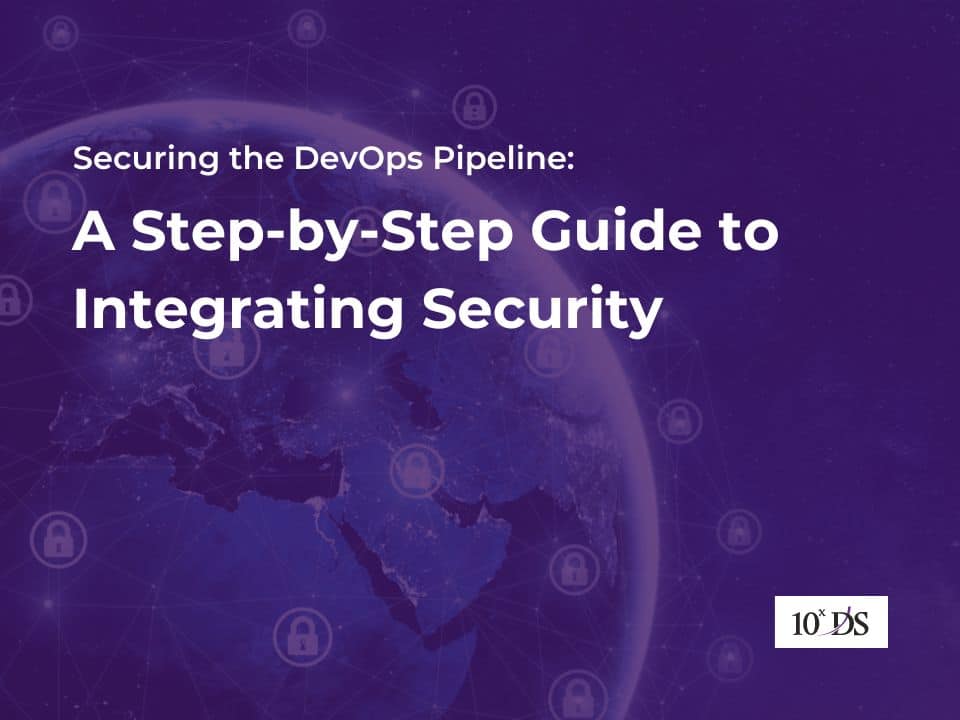
Securing the DevOps Pipeline: A Step-by-Step Guide to Integrating Security
DevOps has become an essential approach for organizations looking to stay competitive, innovate more effectively, and deliver value to their customers with greater efficiency and reliability. The DevOps lifecycle is a collaborative software development approach that streamlines the process of creating, testing, deploying, and maintaining applications. It represents a set of practices and principles aimed at bridging the gap between software development (Dev) and IT operations (Ops). DevOps seeks to create a culture of collaboration and communication between these traditionally separate teams to streamline the software development and deployment process. There are several compelling reasons why organizations adopt DevOps practices. This iterative process emphasizes automation, collaboration, and continuous feedback, enabling teams to deliver high-quality software at a faster pace while ensuring reliability and alignment with business objectives.
As a natural progression of DevOps practices, driven by the recognition of the critical importance of security in the software development lifecycle, DevSecOps evolved. Initially, DevOps aimed to improve collaboration between development and operations teams to accelerate software delivery, but as organizations faced security challenges in their fast-paced development environments, the need for integrating security practices became evident. DevSecOps emerged to formalize this integration, emphasizing the “shift-left” approach of incorporating security from the early stages of development, automating security testing, fostering collaboration between development, security, and operations teams, and instilling a security-conscious culture throughout the organization. This evolution reflects a paradigm shift, acknowledging that security is not a separate function but an integral part of the entire software development and deployment process. Integrating security into DevOps is crucial for ensuring that software development processes prioritize security from the start. This approach helps identify and address security vulnerabilities early in the development lifecycle, leading to more robust and secure applications.
Here’s a step-by-step guide to integrating security into DevOps:
Education and Training
Ensure that your development and operations teams have a strong understanding of security best practices. Offer training on secure coding, threat modeling, and common vulnerabilities.
Risk Assessment
Identify potential security risks and vulnerabilities that could impact your application. Perform threat modeling exercises to understand potential attack vectors and prioritize security concerns.
Security Requirements
Define security requirements as part of the initial project planning. These requirements should cover authentication, authorization, data protection, and compliance needs.
Automated Security Testing
Implement automated security testing as part of your continuous integration (CI) and continuous delivery (CD) pipeline. Use tools like static analysis, dynamic analysis, and container security scanning to identify vulnerabilities early.
Infrastructure as Code (IaC) Security
Ensure your infrastructure code is secure by incorporating security practices into your IaC scripts. Use tools that can scan infrastructure code for misconfigurations and vulnerabilities.
Security Champions
Appoint security champions within your development teams. These individuals have a deep understanding of security and can guide their respective teams in making security-conscious decisions.
Code Reviews
Implement security-focused code reviews where experienced developers or security experts review code for vulnerabilities and suggest improvements.
Threat Detection and Monitoring
Integrate threat detection and monitoring tools into your application and infrastructure. Implement logging and monitoring to identify and respond to potential security incidents.
Container Security
If you’re using containers, ensure that container images are scanned for vulnerabilities before deployment. Regularly update and patch containers to mitigate known security issues.
Secrets Management
Implement a robust secrets management solution to store and handle sensitive information, such as API keys, passwords, and certificates.
Compliance and Governance
Integrate compliance checks into your CI/CD pipeline to ensure that your application meets regulatory and industry standards.
Incident Response Planning
Develop a well-defined incident response plan that outlines steps to take in case of a security breach. Conduct regular drills to ensure your team is prepared to respond effectively.
Collaboration and Communication
Foster open communication between development, security, and operations teams. Regularly share security insights, updates, and best practices across the organization.
Security Documentation
Maintain up-to-date documentation regarding security practices, procedures, and guidelines. This ensures that the knowledge is shared and accessible.
Continuous Improvement
Regularly review and enhance your security practices based on lessons learned from security incidents, new vulnerabilities, and changing technology landscapes.
Third-Party Risk Management
Evaluate and manage the security of third-party components and services that your application relies on.
In conclusion, integrating security into DevOps is no longer an option; it’s a necessity in today’s fast-paced and threat-prone digital landscape. This step-by-step guide has shed light on the crucial practices and principles that make up DevSecOps, emphasizing the “shift-left” approach, automation of security testing, collaboration among cross-functional teams, and the cultivation of a security-conscious culture.
As organizations increasingly recognize the value of securing their software throughout the development lifecycle, the DevSecOps movement continues to evolve, ensuring that security is not just a checkbox but an integral part of every code commit and deployment. By following these steps and embracing a DevSecOps mindset, organizations can proactively safeguard their applications, data, and reputation while continuing to deliver innovative solutions to their customers with confidence and efficiency.
Talk to our experts to know more.


